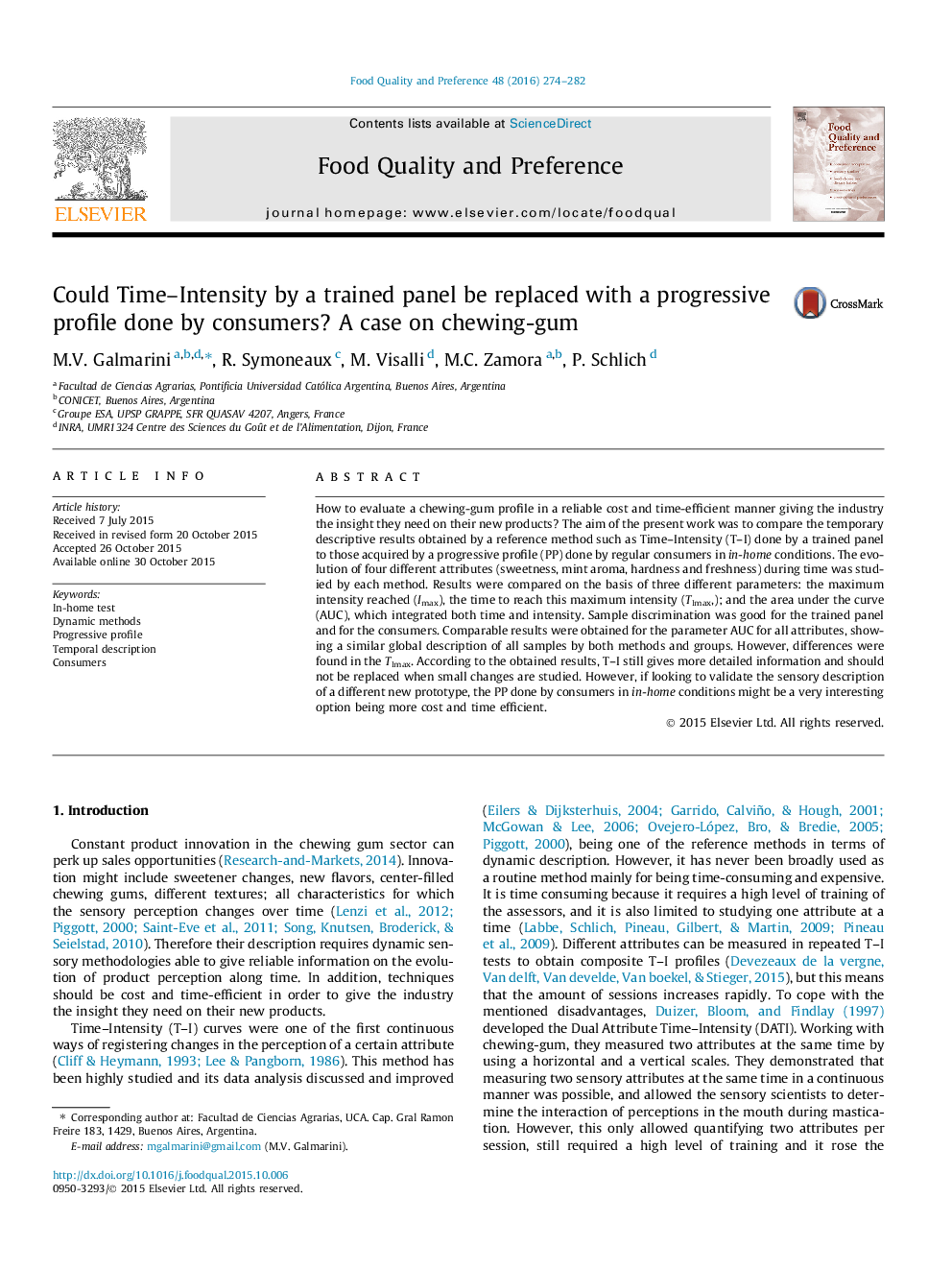| Article ID | Journal | Published Year | Pages | File Type |
|---|---|---|---|---|
| 6261227 | Food Quality and Preference | 2016 | 9 Pages |
â¢Sample discrimination was good for the trained panel and for the consumers.â¢Consumers and trained panel gave global similar information on samples.â¢Time-Intensity results were more precise though laborious.â¢Progressive profile by consumers is a time-efficient option.
How to evaluate a chewing-gum profile in a reliable cost and time-efficient manner giving the industry the insight they need on their new products? The aim of the present work was to compare the temporary descriptive results obtained by a reference method such as Time-Intensity (T-I) done by a trained panel to those acquired by a progressive profile (PP) done by regular consumers in in-home conditions. The evolution of four different attributes (sweetness, mint aroma, hardness and freshness) during time was studied by each method. Results were compared on the basis of three different parameters: the maximum intensity reached (Imax), the time to reach this maximum intensity (TImax,); and the area under the curve (AUC), which integrated both time and intensity. Sample discrimination was good for the trained panel and for the consumers. Comparable results were obtained for the parameter AUC for all attributes, showing a similar global description of all samples by both methods and groups. However, differences were found in the TImax. According to the obtained results, T-I still gives more detailed information and should not be replaced when small changes are studied. However, if looking to validate the sensory description of a different new prototype, the PP done by consumers in in-home conditions might be a very interesting option being more cost and time efficient.
